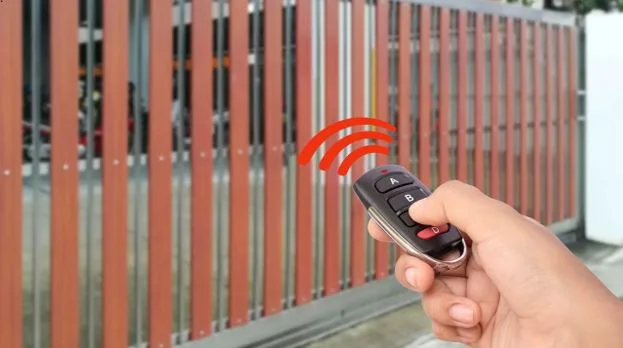The Complete Guide to Automatic Gates: Enhancing Security and Convenience for Modern Properties
In today’s security-conscious world, property owners are increasingly turning to automatic gates as the perfect solution for combining convenience, security, and aesthetic appeal. Whether you’re securing a residential driveway, commercial facility, or community entrance, understanding the various types of gate automation systems available can help you make an informed decision that serves your needs for years to come.
Why Choose Automatic Gates Over Manual Solutions?
The transition from manual to automatic gate systems represents more than just a luxury upgrade it’s a practical investment in your property’s security and your daily convenience. Manual gates require physical effort to operate, expose you to weather conditions, and often compromise security when left open for convenience. Electric gates eliminate these challenges while providing consistent, reliable access control.
Modern gate automation systems offer unprecedented convenience, allowing you to operate your gate from the comfort of your vehicle, office, or even remotely through smartphone applications. This technology has evolved significantly, incorporating safety features, energy-efficient motors, and integration capabilities with comprehensive security systems.
Understanding Different Types of Automatic Gate Systems
Sliding Gates: Maximizing Space Efficiency
Sliding gates represent one of the most popular choices for properties with limited space or steep driveways. These systems operate by moving horizontally along a track, requiring minimal clearance space compared to traditional swing mechanisms. The gate slides parallel to the fence line, making them ideal for properties where swing clearance would interfere with landscaping, vehicles, or neighboring structures.
The engineering behind sliding gates involves a motor-driven system that uses either a rack-and-pinion mechanism or a cable-driven approach. Rack-and-pinion systems attach a gear rack to the gate bottom, with a motorized pinion gear engaging to move the gate smoothly along its track. This method provides excellent control and can handle substantial gate weights, making it suitable for both residential and commercial applications.
Cable-driven sliding systems utilize a tensioned cable system to pull the gate open and closed. While typically used for lighter gates, modern cable systems have evolved to handle impressive loads while maintaining smooth operation. The choice between rack-and-pinion and cable systems often depends on gate weight, usage frequency, and specific site conditions.
Swing Gates: Traditional Elegance Meets Modern Technology
Swing gates maintain the classic aesthetic appeal that many property owners prefer while incorporating sophisticated automation technology. These systems can be configured as single or double gates, with each configuration offering distinct advantages depending on your specific requirements and available space.
Single swing gates work well for narrower openings and typically require less complex installation. The gate operators for single swing systems are generally mounted on the gate post or adjacent structure, using either hydraulic or electromechanical actuators to provide the necessary opening force. These systems are particularly effective for residential applications where the gate width doesn’t exceed standard vehicle requirements.
Double swing gates provide wider openings suitable for larger vehicles, delivery trucks, or when you want to create a more impressive entrance. The synchronization between two gate panels requires sophisticated control systems to ensure both gates open and close simultaneously while maintaining proper alignment. Modern gate operators include built-in synchronization features that prevent issues like gate sagging or uneven movement.
The choice between underground and above-ground swing gate operators significantly impacts both aesthetics and functionality. Underground operators provide clean sight lines and protection from weather and vandalism but require more extensive installation work. Above-ground operators are easier to install and maintain but are more visible and potentially vulnerable to tampering.
Gate Operators: The Heart of Your Automation System
Gate operators serve as the mechanical foundation of any automatic gate system, converting electrical power into the physical force needed to move heavy gates reliably. Understanding the different types of gate operators helps you select the most appropriate system for your specific application.
Electromechanical Gate Operators
Electromechanical operators use electric motors combined with gear reduction systems to provide the necessary torque for gate movement. These systems are known for their reliability, longevity, and relatively quiet operation. The gear reduction mechanism allows smaller, more efficient motors to handle substantial gate weights by trading speed for increased torque output.
Modern electromechanical operators incorporate sophisticated control systems that monitor gate position, detect obstacles, and adjust operation based on environmental conditions. Variable speed control ensures smooth starts and stops, reducing wear on gate components and improving overall system longevity.
Hydraulic Gate Operators
Hydraulic systems provide exceptional power and precision, making them ideal for heavy gates or high-frequency commercial applications. These operators use hydraulic fluid pressure to drive pistons that move the gate, providing smooth, consistent motion regardless of gate weight or external conditions like wind resistance.
The primary advantages of hydraulic operators include their ability to handle extremely heavy gates, provide precise positioning control, and operate reliably in extreme weather conditions. However, they typically require more maintenance than electromechanical systems and may experience issues if hydraulic seals fail.
Solar-Powered Gate Automation
Environmental consciousness and energy efficiency have driven significant innovation in solar-powered gate automation systems. These systems combine photovoltaic panels with battery storage to provide reliable gate operation without connection to the electrical grid. Modern solar gate operators can maintain consistent performance even during extended periods of limited sunlight through efficient battery management systems.
Solar gate automation offers particular advantages for remote locations where electrical connection would be expensive or impractical. Additionally, these systems often include backup battery capacity that can maintain operation during power outages, providing an advantage over traditional AC-powered systems.
Essential Features of Modern Electric Gates
Safety Systems and Compliance
Contemporary automatic gates incorporate multiple safety systems designed to prevent accidents and ensure compliance with safety regulations. Photoelectric sensors create invisible barriers that detect pedestrians or vehicles in the gate’s path, immediately stopping or reversing gate movement to prevent collisions.
Pressure-sensitive edges mounted on gate panels detect contact with objects and immediately halt gate movement. These systems are particularly important for swing gates where the closing motion could potentially trap someone between the gate and adjacent structures.
Loop detectors installed in the driveway surface can detect vehicle presence and automatically trigger gate opening, while also preventing the gate from closing when a vehicle is positioned within the gate’s swing radius. These systems provide hands-free operation while maintaining high safety standards.
Access Control Integration
Modern gate automation systems seamlessly integrate with various access control technologies to provide secure, convenient entry management. Traditional keypads allow entry through numerical codes, with many systems supporting multiple user codes and temporary access codes for guests or service providers.
Radio frequency remote controls provide convenient vehicle access, with modern systems supporting rolling code technology that prevents unauthorized duplication. Some systems support multiple remote frequencies and can learn new remotes without requiring professional programming.
Smartphone integration represents the cutting edge of gate access control, allowing property owners to operate their gates from anywhere with cellular coverage. These systems often include visitor management features, allowing temporary access grants and providing notifications when the gate is operated.
Card readers and proximity sensors provide professional access control suitable for commercial and community applications. These systems can integrate with existing security card systems and provide detailed access logging for security monitoring.
Installation Considerations and Best Practices
Site Assessment and Preparation
Proper installation begins with comprehensive site assessment to determine the optimal gate type, operator location, and any necessary site modifications. Factors like ground slope, drainage, electrical access, and clearance requirements all influence installation complexity and system performance.
Ground preparation for sliding gates requires careful attention to track alignment and drainage. The track must be perfectly level and properly secured to prevent gate binding or premature wear. Adequate drainage prevents water accumulation that could interfere with gate movement or cause track corrosion.
Swing gate installations require precise post alignment and proper foundation preparation. Gate posts must be plumb and properly spaced to ensure smooth operation and prevent binding. Foundation requirements vary based on gate size and local soil conditions but typically require concrete footings extending below the frost line.
Electrical Requirements and Safety
Automatic gate installations require careful attention to electrical safety and local code compliance. Most systems require dedicated electrical circuits with ground fault circuit interrupter (GFCI) protection. Professional electrical installation ensures compliance with local codes and prevents potential safety hazards.
Control panel location should provide easy access for maintenance while protecting electronic components from weather exposure. Many systems include built-in surge protection to prevent damage from electrical storms or power fluctuations.
Emergency disconnect systems allow manual gate operation during power outages or system failures. These systems should be easily accessible to authorized users while remaining secure from unauthorized access.
Maintenance and Long-Term Performance
Preventive Maintenance Programs
Regular maintenance ensures optimal performance and extends system lifespan while preventing costly emergency repairs. Monthly visual inspections should check for proper gate alignment, unusual noise, or signs of wear. Lubrication of moving components according to manufacturer specifications prevents premature wear and ensures smooth operation.
Seasonal maintenance should address specific challenges like debris removal, weatherstrip replacement, and battery testing for backup power systems. Professional annual inspections can identify potential issues before they become major problems.
Troubleshooting Common Issues
Understanding common gate automation problems helps property owners maintain their systems effectively. Gate speed variations often indicate motor or drive system issues that require professional attention. Excessive noise during operation may suggest lubrication needs or component wear.
Remote control range reduction typically indicates battery replacement needs or potential interference from new electronic devices. Professional technicians can diagnose complex electrical issues and ensure proper system operation.
Future Trends in Gate Automation Technology
The gate automation industry continues evolving with advances in smart home integration, artificial intelligence, and renewable energy systems. Future systems will likely incorporate advanced sensors for predictive maintenance, enhanced security features like facial recognition, and improved energy efficiency through intelligent power management.
Integration with comprehensive property management systems will provide seamless control of gates, lighting, security cameras, and other automated systems through unified interfaces. These developments will continue making automatic gates more convenient, secure, and energy-efficient.
Making the Right Choice for Your Property
Selecting the appropriate automatic gate system requires careful consideration of your specific needs, budget, and long-term goals. Professional consultation can help you evaluate options and ensure you choose a system that provides years of reliable service while enhancing your property’s security and convenience.
Whether you choose sliding gates for space efficiency, swing gates for traditional aesthetics, or specialized operators for unique requirements, investing in quality gate automation provides lasting benefits that enhance both your daily convenience and property value. The technology has matured to the point where automatic gates represent a practical, reliable solution for virtually any property security need.






